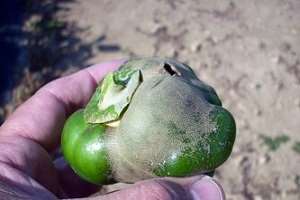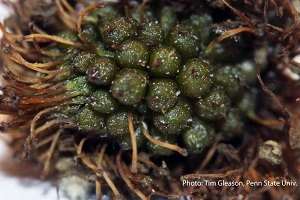Broad mites are being observed more frequently on a variety of vegetable crops in the field, high tunnel, and greenhouse.

Broad mites are very tiny and range in size from .1 mm to .3 mm in length. They can move through the plant canopy by crawling, but they will also hitch-hike on winged insects like white fly and aphids. Broad mites can attack over 60 families of plants, including vegetable stalwarts like beet, beans, cucumber, eggplant, pepper, potato, and tomato. As the broad mite feeds it releases a toxin that has growth regulator effects on plant tissues. Very low densities of this pest can cause significant plant and fruit injury.
Symptoms of broad mite infestations can include leaf distortion, shortening of internodes, leaf discoloration, leaf blistering and shriveling, fruit russeting, fruit deformity, and fruit splitting. Damage from broad mites can continue to appear in the field, high tunnel, or greenhouse for several weeks after this pest has been controlled because of the growth regulating effects of the broad mite toxin.
